Official government website of the Government of the Kingdom of Saudi Arabia
Links to official Saudi websites end withgov.sa
All links to official websites of government agencies in the Kingdom ofSaudi Arabia end with .gov.sa
Government websites use theHTTPSprotocol for encryption and security.
Secure websites in the Kingdom of Saudi Arabia use the HTTPS protocolfor encryption.
GASTAT: The total number of pilgrims for the 1440 AH Hajj season is 2,489,406, an increase of 4.96% from last year; the Kingdom has provided over 350 thousand employees to serve them
18-08-2019
Statistics: More than (200) main services representing the (general Hajj services), which is one of the five basic services provided by more than (257 thousand) employees working in (21) government and private parties.
18-08-2019
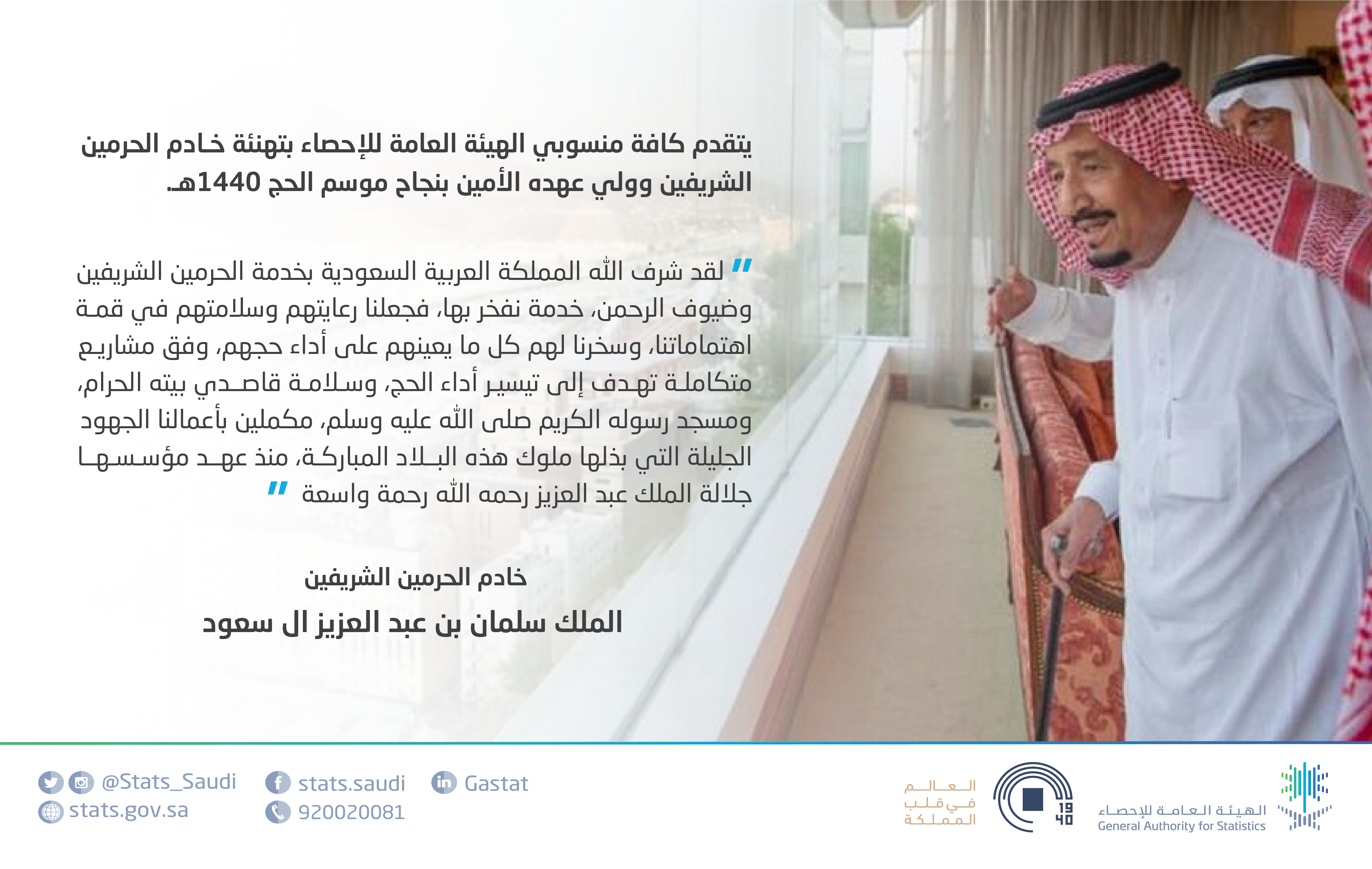
رئيس الهيئة العامة للإحصاء: توجيهات خادم الحرمين وولي عهده الأمين كانت المنطلق الذي عملت من خلاله كافة الجهات الحكومية لإنجاح موسم الحج
14-08-2019
GaStat: There are 13,776 Towers to Ensure Good Cellphone Coverage and 5G Technology in Mecca and the Holy Places for Pilgrims
08-08-2019
General Authority for Statistics: Over 95 million Hajj pilgrims hosted and served by KSA over the last 50 years
07-08-2019
GaStat: The Kingdom has tasked 38,000 employees with transport, mail, shipping, and logistics services for Hajj pilgrims.
07-08-2019
Authority for Statistics: Follow-up and field supervision on Hajj health services is one of the five key services offered to Hajj pilgrims. It includes over 33 basic services delivered by more than 6,000 supervisor and monitor
07-08-2019
GaStat: Over 30,000 employees are ready to provide health services for pilgrims, with 16 hospitals in Mecca and the Holy Sites, 125 health centers, and 132 ambulance centers
06-08-2019
GASTAT releases the results of the Agricultural Holdings Survey for 2018
04-08-2019
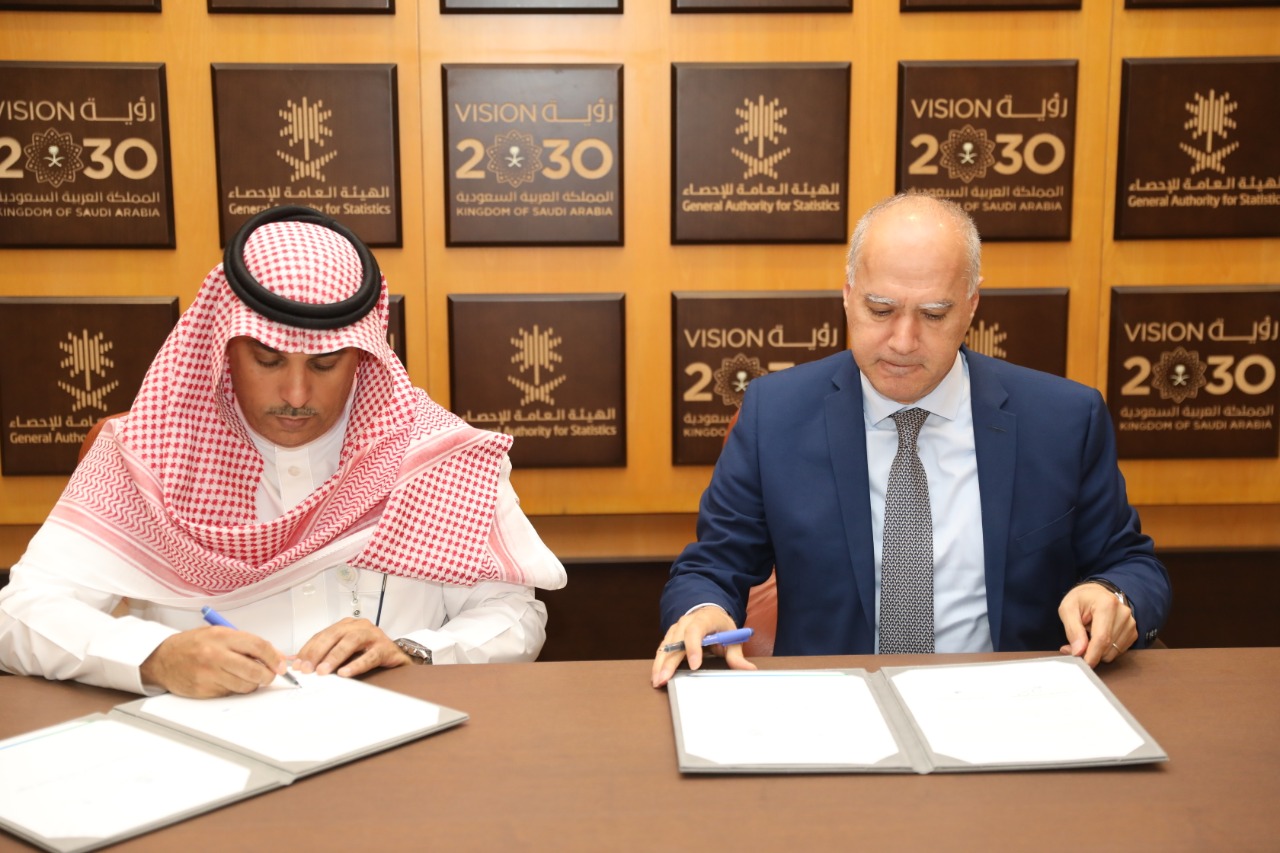
“GASTAT” & World Bank: Our collaboration Supports Government Entities in the Exchange of Statistical Data and highlighting their efforts at the international level
02-08-2019
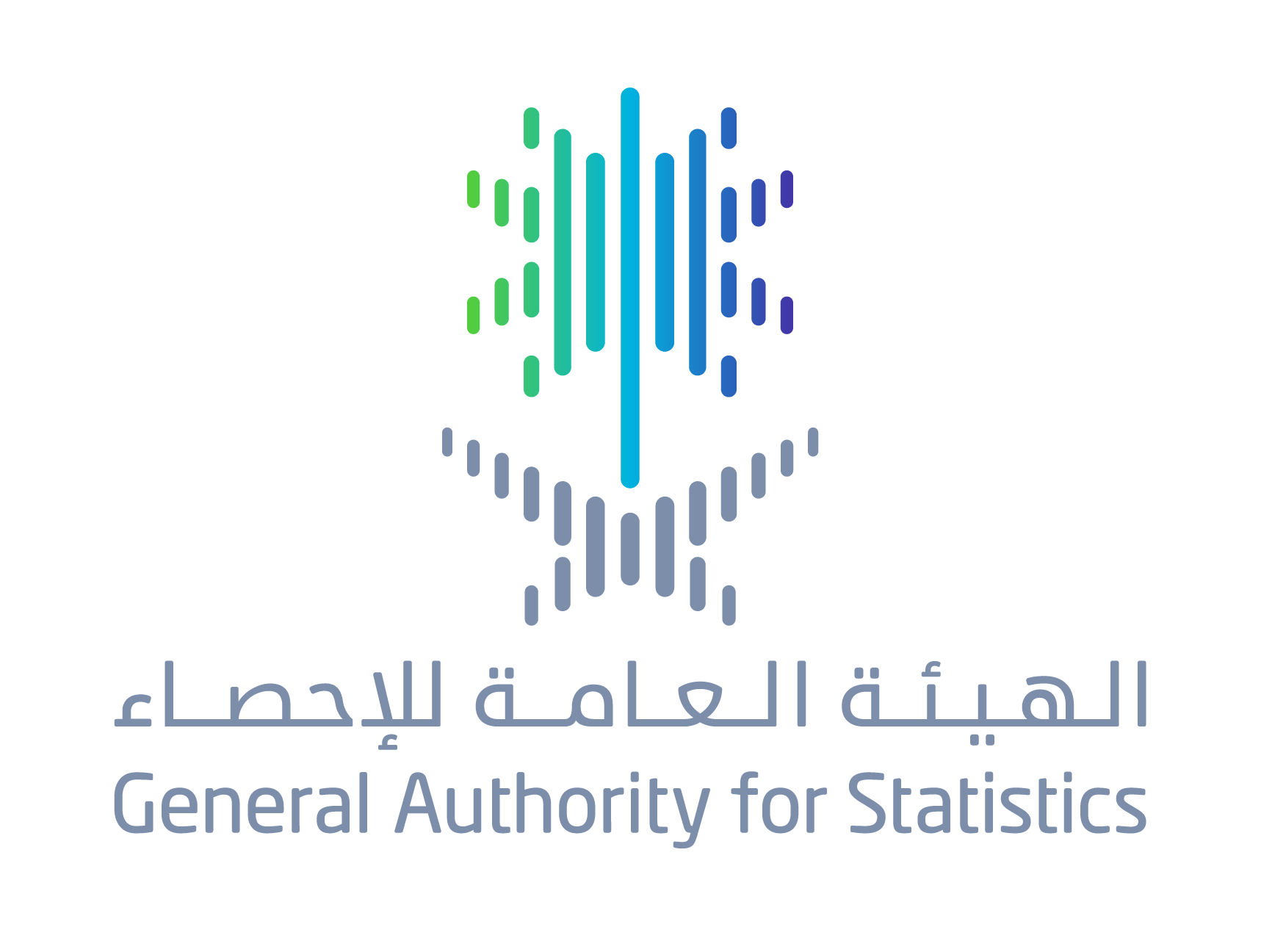
GASTAT Releases Results of Household Health Survey, 2018
28-07-2019
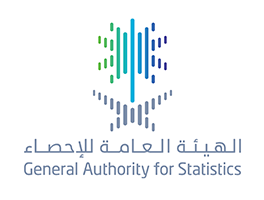
GASTAT: releases Consumer Price Index(CPI) Monthly Report for June,2019
28-07-2019
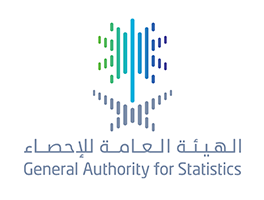
GASTAT Releases Results of Household’ Culture and Entertainment Survey for 2018
28-07-2019
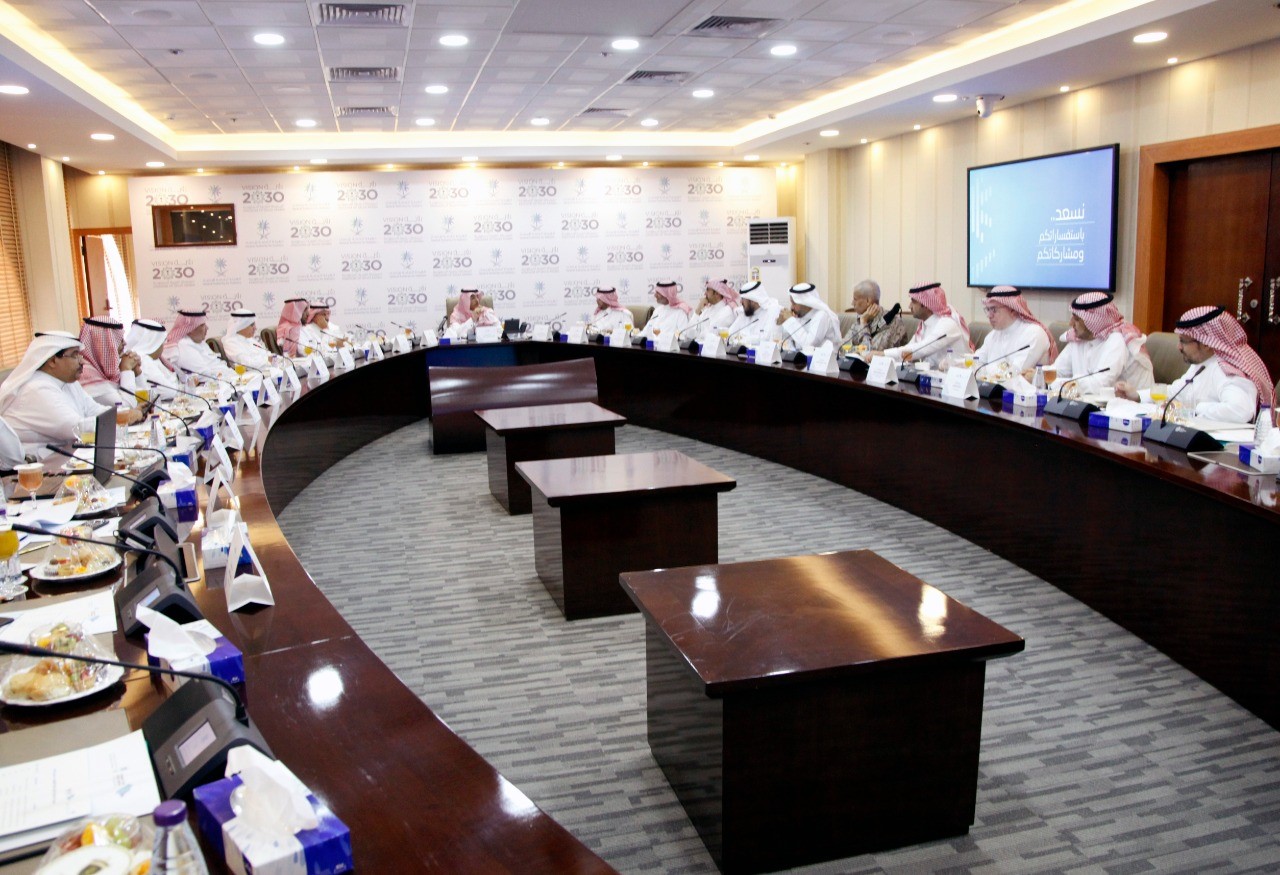
8 governmental entities review 21 executive plans for Saudi Arabia Census 2020
28-07-2019
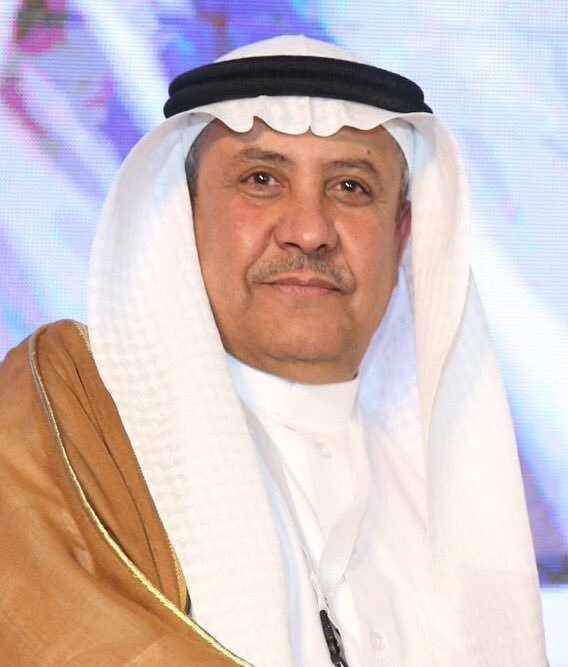
(16.8%) of Saudis contribute in voluntary works, and the average voluntary working hours of total population reached (52.2) hours during the twelve months preceding the survey
28-07-2019
GASTAT Releases Real Estate Price Index for Q2, 2019
28-07-2019
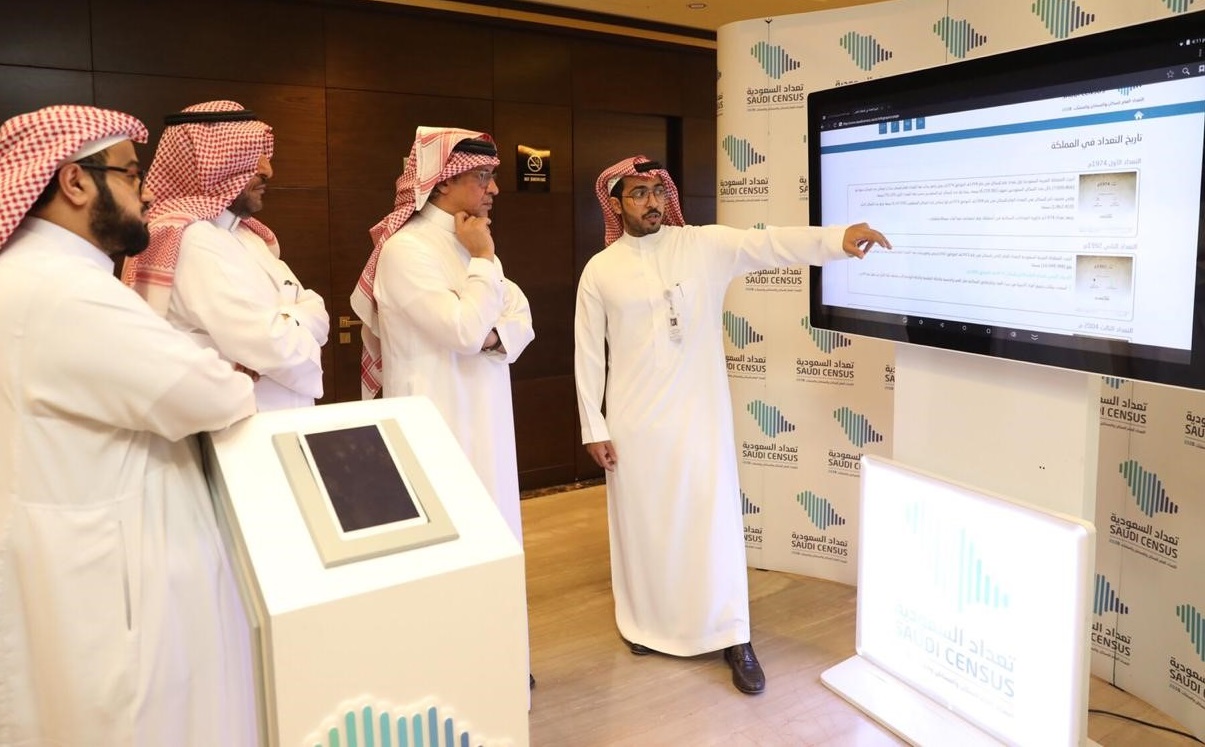
GASTAT Launches “Self-enumeration System” and e-portal for Saudi Arabia’s 2020 Census
18-06-2019
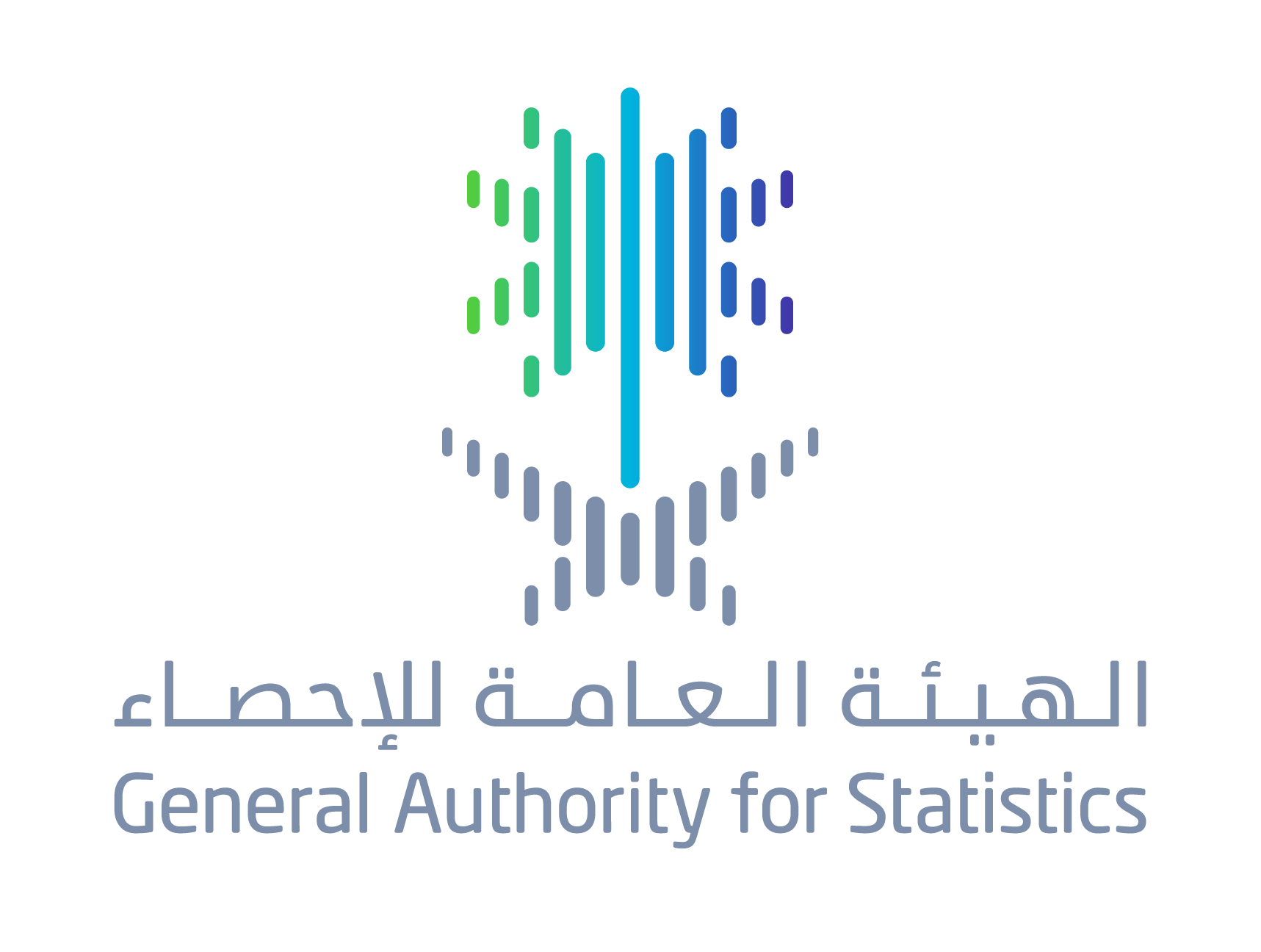
Saudi Arabia concludes its participation in the first meeting of the friends of the chair group on economic statistics of the United Nations within 11 countries
12-06-2019
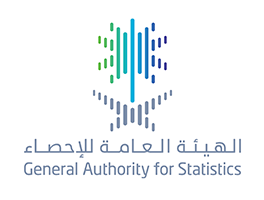
GASTAT Releases Results of Umrah Statistics Bulletin (2018)
14-05-2019
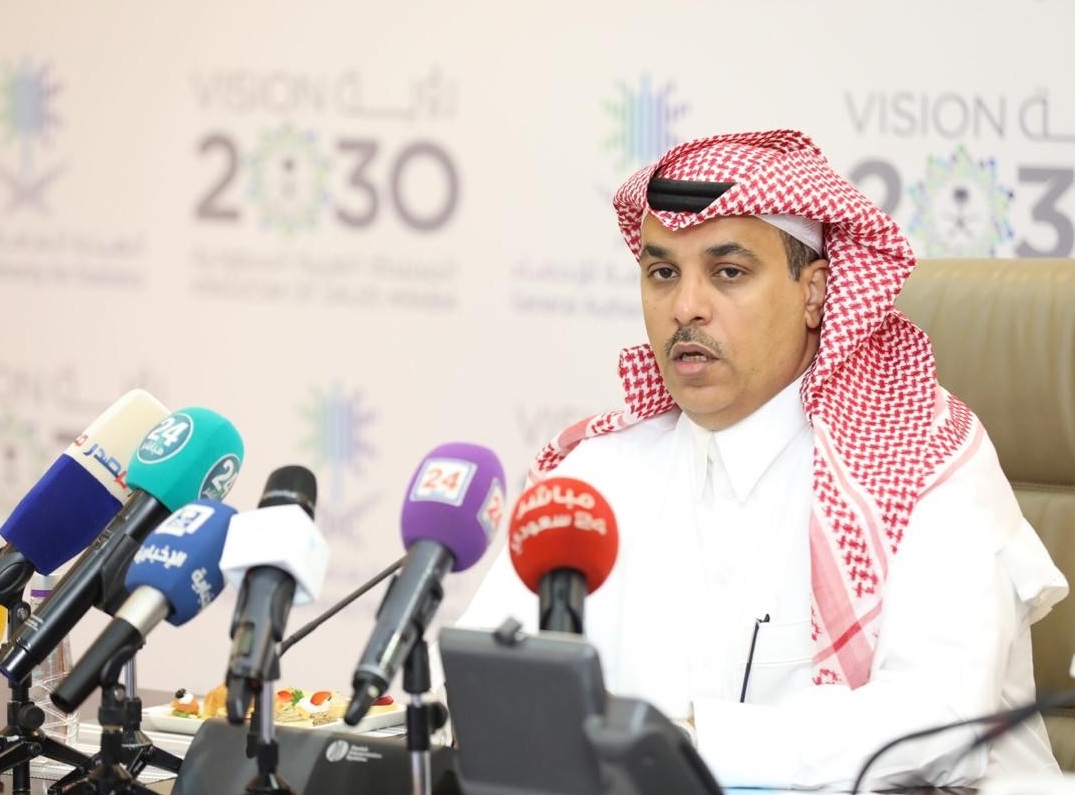
GASTAT Releases the Results of the Household’s Income and Expenditure Survey (2018)
09-05-2019
GASTAT: The total number of pilgrims for the 1440 AH Hajj season is 2,489,406, an increase of 4.96% from last year; the Kingdom has provided over 350 thousand employees to serve them
18-08-2019
Statistics: More than (200) main services representing the (general Hajj services), which is one of the five basic services provided by more than (257 thousand) employees working in (21) government and private parties.
18-08-2019

رئيس الهيئة العامة للإحصاء: توجيهات خادم الحرمين وولي عهده الأمين كانت المنطلق الذي عملت من خلاله كافة الجهات الحكومية لإنجاح موسم الحج
14-08-2019
GaStat: There are 13,776 Towers to Ensure Good Cellphone Coverage and 5G Technology in Mecca and the Holy Places for Pilgrims
08-08-2019
General Authority for Statistics: Over 95 million Hajj pilgrims hosted and served by KSA over the last 50 years
07-08-2019
GaStat: The Kingdom has tasked 38,000 employees with transport, mail, shipping, and logistics services for Hajj pilgrims.
07-08-2019
Authority for Statistics: Follow-up and field supervision on Hajj health services is one of the five key services offered to Hajj pilgrims. It includes over 33 basic services delivered by more than 6,000 supervisor and monitor
07-08-2019
GaStat: Over 30,000 employees are ready to provide health services for pilgrims, with 16 hospitals in Mecca and the Holy Sites, 125 health centers, and 132 ambulance centers
06-08-2019
GASTAT releases the results of the Agricultural Holdings Survey for 2018
04-08-2019

“GASTAT” & World Bank: Our collaboration Supports Government Entities in the Exchange of Statistical Data and highlighting their efforts at the international level
02-08-2019

GASTAT Releases Results of Household Health Survey, 2018
28-07-2019

GASTAT: releases Consumer Price Index(CPI) Monthly Report for June,2019
28-07-2019

GASTAT Releases Results of Household’ Culture and Entertainment Survey for 2018
28-07-2019

8 governmental entities review 21 executive plans for Saudi Arabia Census 2020
28-07-2019

(16.8%) of Saudis contribute in voluntary works, and the average voluntary working hours of total population reached (52.2) hours during the twelve months preceding the survey
28-07-2019
GASTAT Releases Real Estate Price Index for Q2, 2019
28-07-2019

GASTAT Launches “Self-enumeration System” and e-portal for Saudi Arabia’s 2020 Census
18-06-2019

Saudi Arabia concludes its participation in the first meeting of the friends of the chair group on economic statistics of the United Nations within 11 countries
12-06-2019

GASTAT Releases Results of Umrah Statistics Bulletin (2018)
14-05-2019

GASTAT Releases the Results of the Household’s Income and Expenditure Survey (2018)
09-05-2019